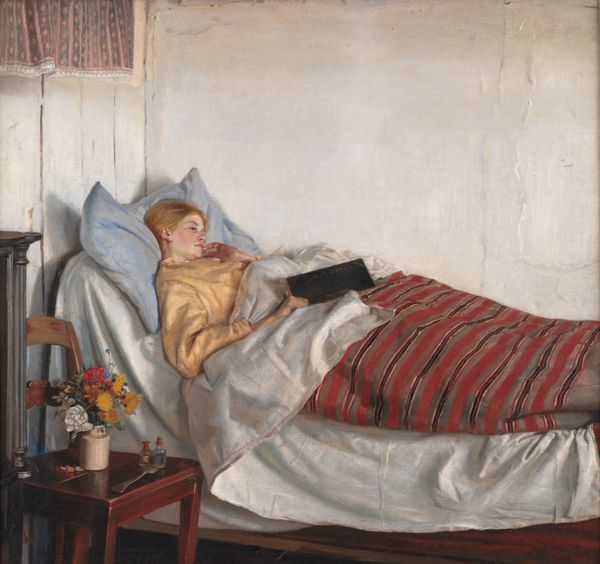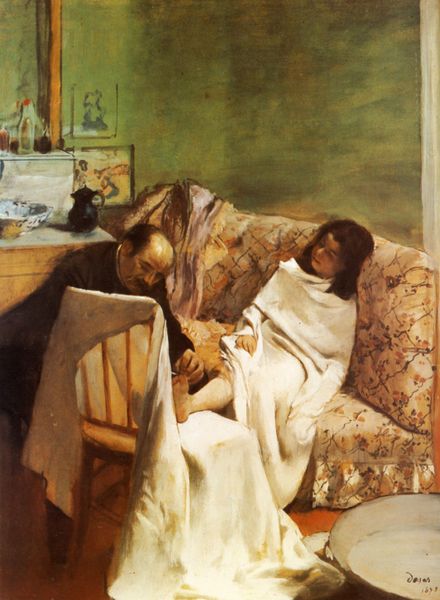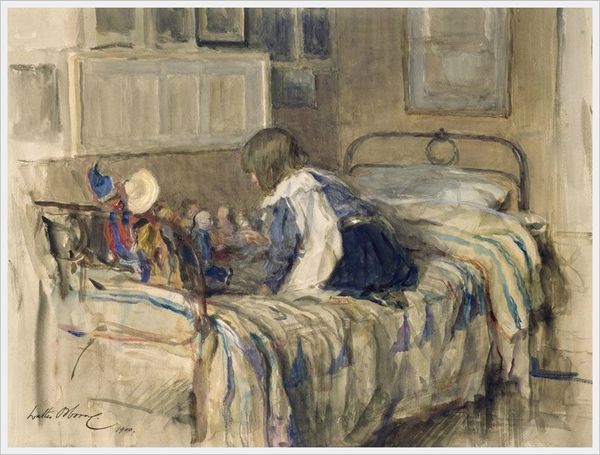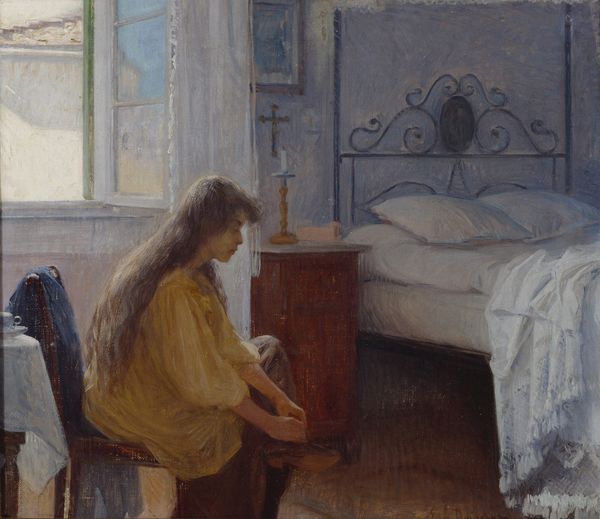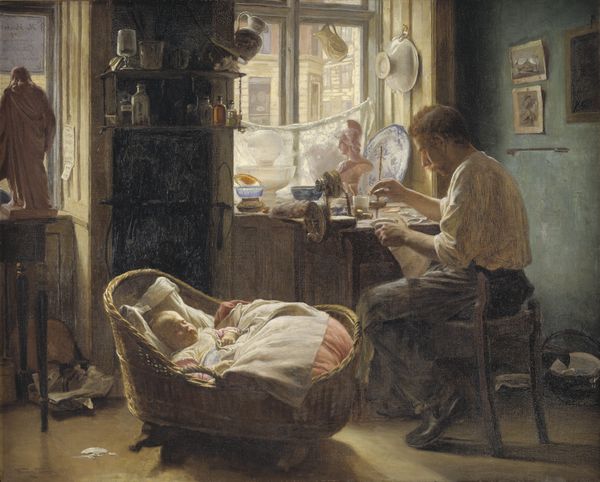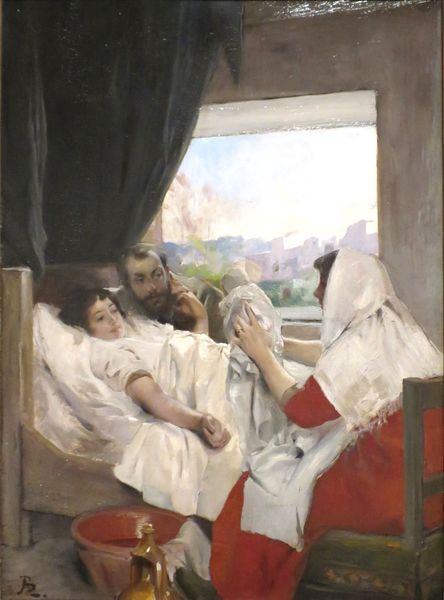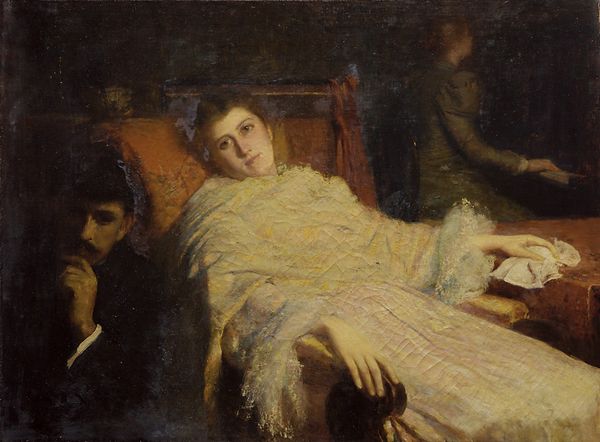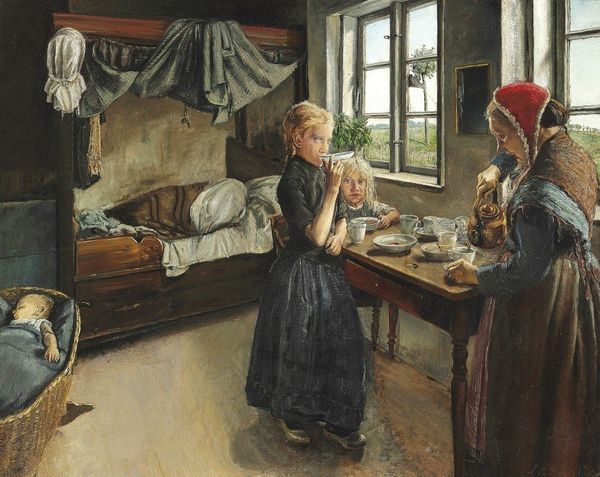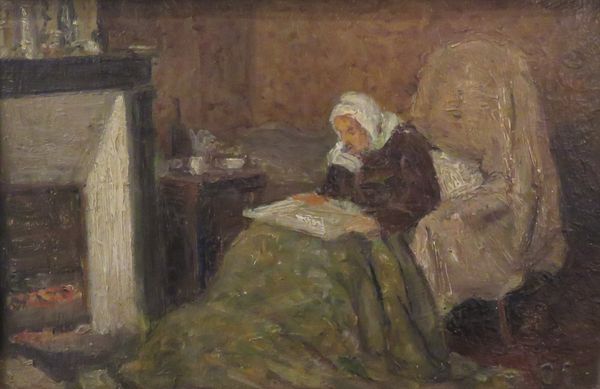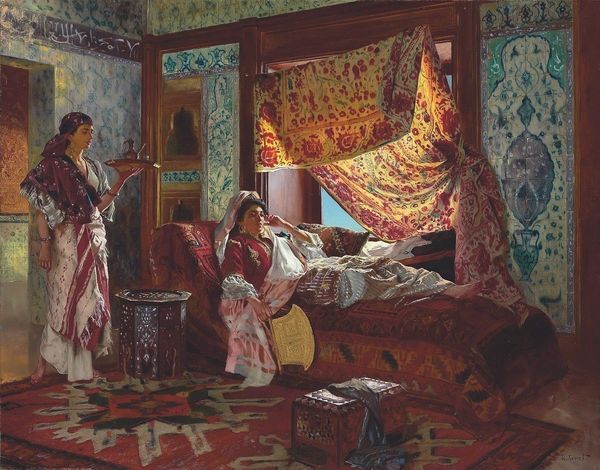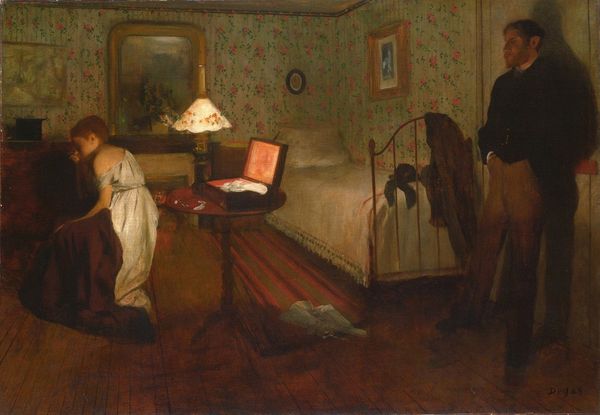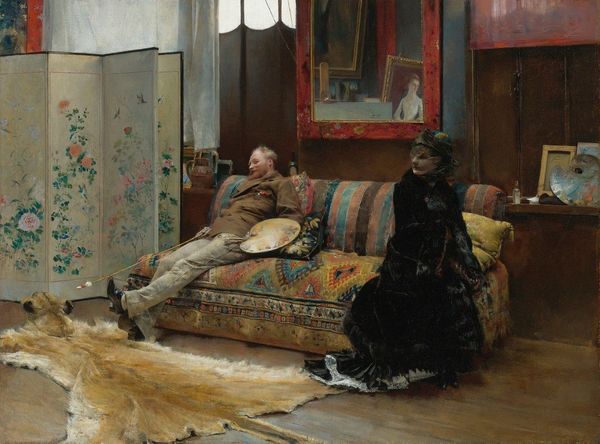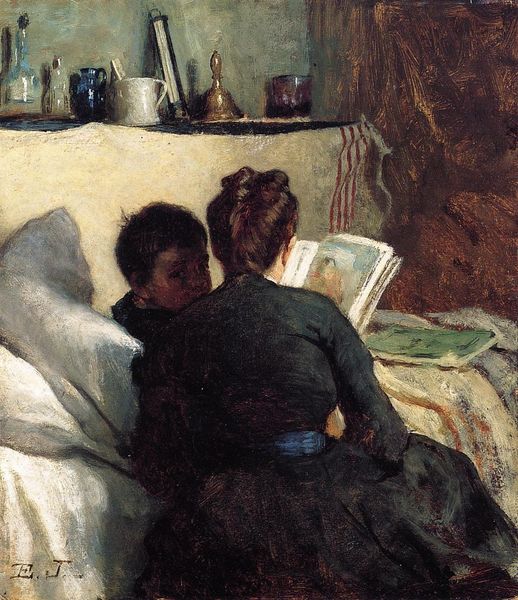
Dimensions: 61.5 x 70.5 cm
Copyright: Public Domain
Editor: This painting, “The Artist’s Father in his Sickbed,” was created in 1888 by Lovis Corinth. It’s an oil painting that evokes a somber, intimate feeling. There’s so much weight to the materiality of the scene – the bedsheets, the knitting, the medicine bottles. What stands out to you about this piece? Curator: Immediately, the textures grab my attention. Notice how Corinth renders the fabric of the bed linens versus the woman's dress? The painting isn’t just representing a scene, it's presenting a study in labor. The crisp, almost clinical white of the bed contrasts sharply with the hand-made, vividly colored knitting the woman holds. This contrast elevates the work past a simple genre painting, wouldn't you agree? Editor: Yes, I do see that now. I hadn’t considered the social context of handmade versus mass-produced items, but it’s really powerful here. What can this attention to materials tell us about the period and the subjects? Curator: It speaks volumes about domestic labor and its relationship to illness and care. Knitting, traditionally women's work, becomes an act of both nurturing and perhaps, resistance. The handcraft provides a subtle act of human productivity in the face of the father’s stillness, contrasting sharply to medical tools, that remain still, unused. Do you see how these objects contribute to the story beyond what the figures are doing? Editor: Absolutely! I now understand how a materialist reading uncovers layers of meaning – social class, gendered labor, and the raw realities of caregiving that I hadn't initially noticed. Thank you for helping me understand art through this lens. Curator: Of course. Examining how the materiality connects with labor processes expands our understanding. It provides fresh insight beyond simple representations.
Comments
No comments
Be the first to comment and join the conversation on the ultimate creative platform.
